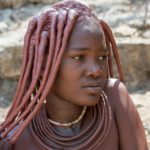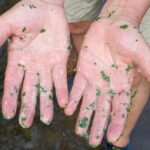Chewing sticks, or toothbrush sticks, were widely used in former times from Ethiopia down to the southern tip of Africa. Nowadays, plastic toothbrushes are commonly used, and chewing sticks are still commonplace only in very rural parts of this area. Generally, a good chewing stick must have a fibrous texture and be easy to chew initially. It must also be agreeable in taste and have antibacterial and antiplaque properties.

Many types of shrubby trees fulfill these requirements. In Southern Africa, the most widely used are Bluebush sticks, followed by Mustard tree sticks, Magic Guarri, and Small Knobwood sticks.
Bluebush chewing sticks
Bluebush (Diospyrus lycioides) is a large shrub easily discernable by its star-shaped leaves directly on top of the fruit. It looks very similar to tomatoes. The wood is yellowish due to its quinone content. It contains anti-bacterial binaphtalenone glycosides and naphtoquinones. Mainly, roots are used as chewing sticks, but in Kaokoland/Namibia, twigs are also used.
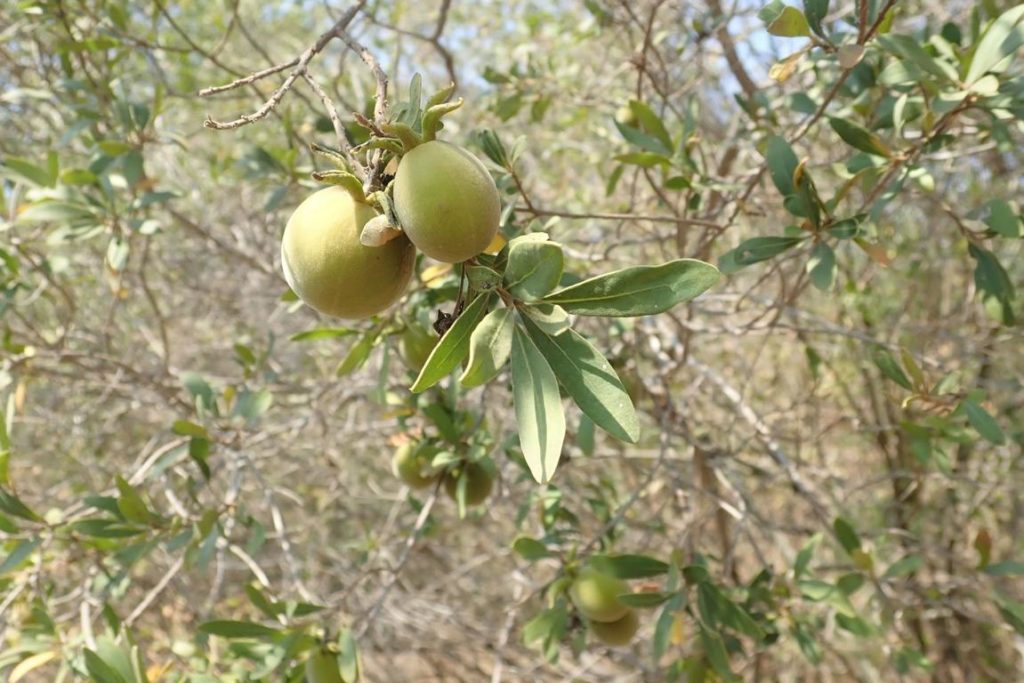
Mustard tree chewing sticks
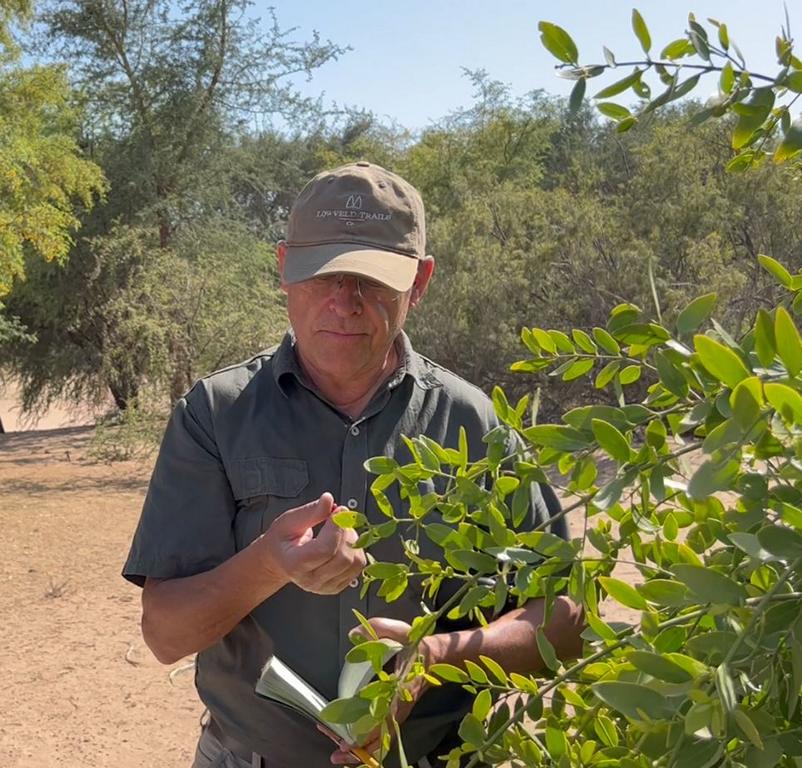
Mustard Tree (Salvadora persica) twigs and roots are the best-known toothbrush sticks in East and Northeast Africa (Ethiopia), the Middle East, and Pakistan. In India, neem twigs (Azadirachta indica) are mainly used as chewing sticks.
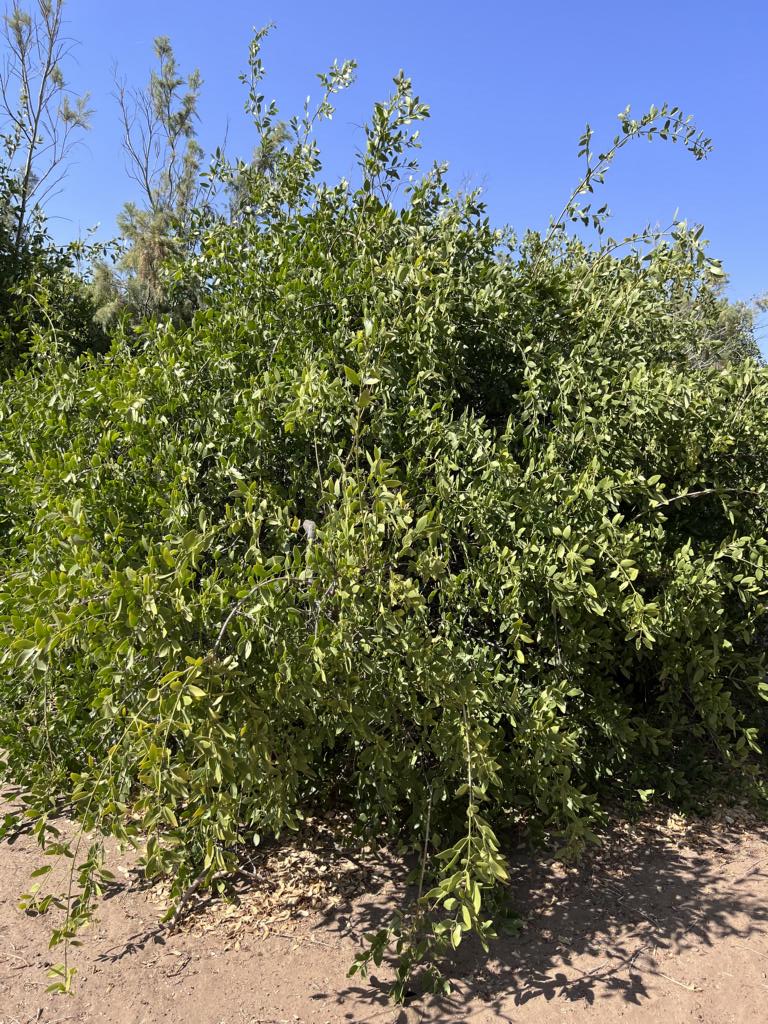
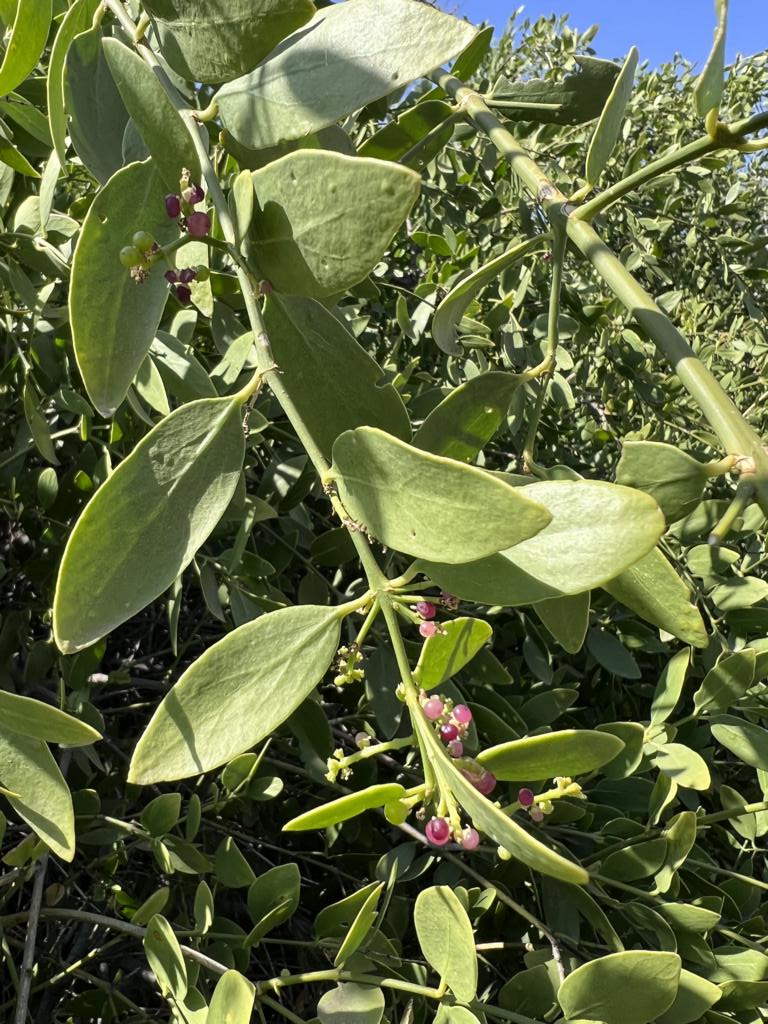
Salvadora persica is easy to identify. Its ripe berries have a spicy, zesty taste. The root extracts are even used in commercial toothpaste.

Guarri chewing sticks
In Southern Africa, not only Magic Guarri (Euclea divinorum) but also the Common-, Natal-, and Blue- Guarri species provide pleasantly tasting toothbrush sticks. They are easy to prepare by chewing and do not leave fibers between the teeth. I favor them over all others. Additionally, there are often ripe fruits in the bushes to enjoy.




I have no personal experience with the fourth wood species for chewing sticks, Small Knobwood (Zanthoxylum capense), and therefore, I can not comment on it.
Alternative toothpaste
Ash from Leadwood trees is often recommended as an alternative toothpaste. Leadwood is easily recognized by its large tree size, silvery bark, and vertically oriented, rectangular bark squares.

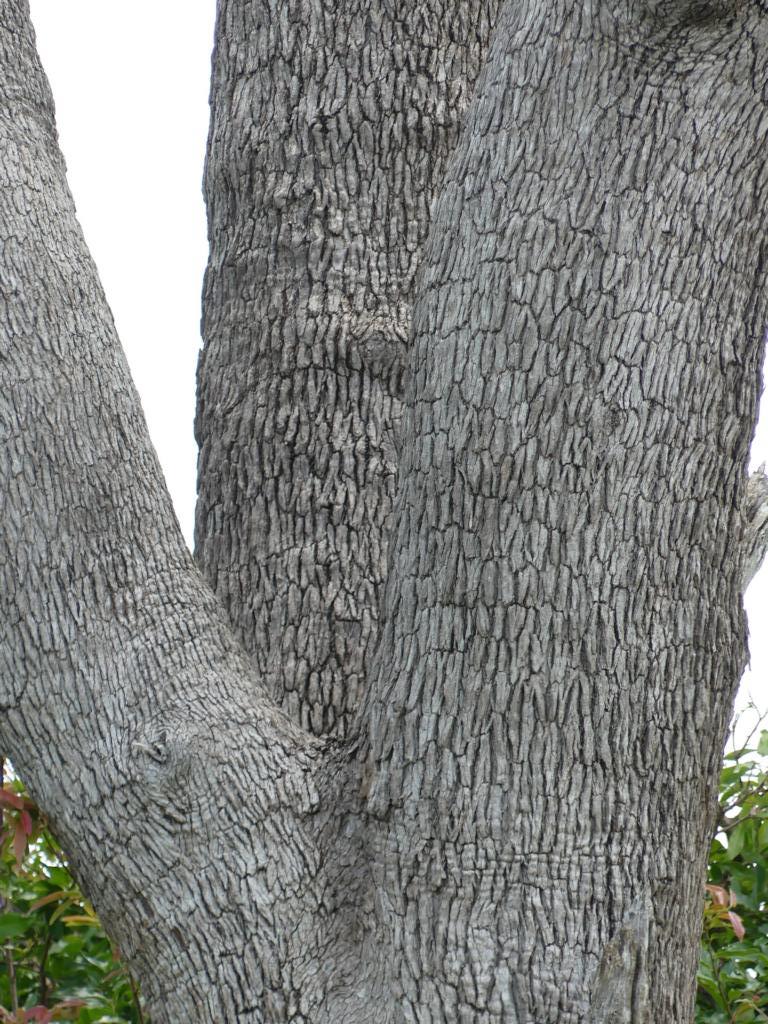
Due to its high lime content, leadwood ashes are ideal for alternative toothpaste. These tiny calcium crystals act as abrasives, and a watery solution of the ash will buffer the acid environment in the mouth. However, leadwood is an endangered wood species and, therefore, is protected by law. Its dead wood offers ideal conditions for various ecosystems in the savanna biome.
It would be better to use any other hardwood ashes as toothpaste, as their chemical function is still the same as leadwood’s, and the chewing stick itself can take over the mechanical part of cleaning.
Lessons learned about chewing sticks and alternative toothpaste:
- Bluebush is the most used wood for this application in Southern Africa
- Mustard tree chewing sticks are mainly used in Arabian countries
- My personal favorite are sticks made from Guarri species
- Best alternative toothpaste originates from leadwood
.


